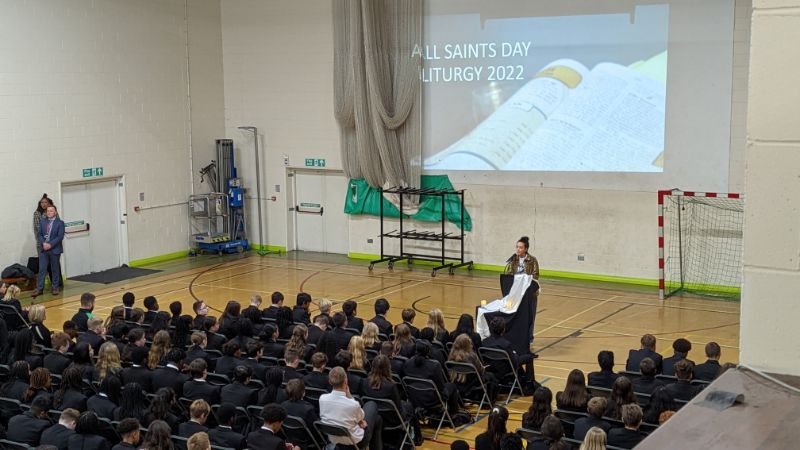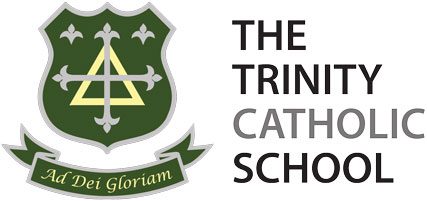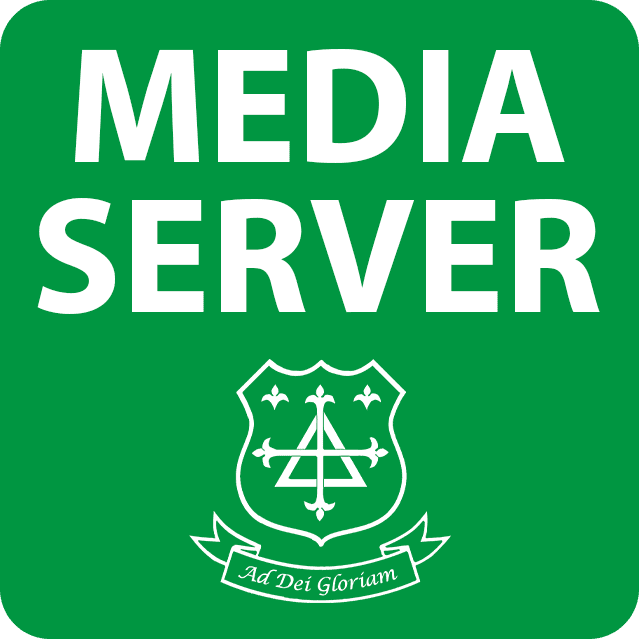A group of 47 students and 6 teachers have just returned from visiting Belgium and France to see the battlefields and war graves of the First World War.
The trip left early on Thursday morning and took the best part of the day to get to Belgium.
En-route to the hotel, the group visited the ‘Brooding Soldier’ memorial that commemorates the first gas attack by the Germans in April 1915. After settling in at the hotel and having an evening meal, the group walked up to the German Cemetery at Langemark. After looking around the cemetery in the rain, the group returned to the hotel before retiring to bed.
Friday was the day to visit the Somme Battlefield sights in France. After a very early start, the day began at the ‘sunken lane’. The students were read some eyewitness accounts from the 1st of July 1916 before doing a battlefield walk. The group walked up the infamous sunken lane and visited several sights nearby, including the British area behind the lines, gun emplacements, and finally the Hawthorne Crater. In addition to the sights, several interesting items from the ‘Iron Harvest’ were seen. These included several dud shells and a No5 Mills Bomb hand grenade. The staff made sure that everyone saw these items from a distance and that nothing was touched! We also saw a ‘British War Graves’ team carrying out their work in a field, possibly recovering the remains of a soldier from the Great War. A short memorial service was then held in the Hawthorn Ridge cemetery. After a few prayers and readings, a few students planted a cross that they had been given, on a grave of a soldier of their choice.
After lunch, the group visited the huge memorial to the missing at Thiepval. After looking around the memorial and being able to locate the names of some relatives, the group headed to Newfoundland Memorial Park and saw the remains of the preserved battlefield including the ‘Danger Tree’. The next stop was at the Ulster Tower where the group had some refreshments. The final visit of the day was to visit the Lochnagar Crater in the pouring rain. The pupils could walk all the way around the massive crater and experience just how big it was. The coach then set off for the hotel and evening meal.
Saturday was the day to visit the signs of Flanders in Belgium. The first visit was to the huge Tyne Cot cemetery where they saw the graves of 50,000 British troops. It was a very moving experience for all. The next stop was to visit Hill 60 where mine craters, blown-up pill boxes, blockhouses and machine gun posts are still visible. There was also the huge Caterpillar Crater to walk around. We then visited the museum and excavated trenches at Hooge Crater. The group had their lunch on the coach, before seeing the WW1 medical display in the museum (which is part of the History curriculum). The excavated trenches were very interesting as they showed the differences between British and German trenches. After this, we visited Hill 62. Here, the students could see a vast array of war relics and could then explore the reconstructed trench system and tunnels. Most of the pupils thought that this was the highlight of the trip. The final visit of the day was to the Passendale Museum. Mr Howell and Mr Stevens guided the group around the various exhibits which included replica dugouts and trench lines. The group then returned to the hotel for the evening meal before heading off to Ypres for the ‘Last Post’ ceremony at the Menin Gate. Before the very crowded remembrance service, the group visited a typical Belgium chocolate shop and bought loads of goodies. After a walk around the center of Ypres, we returned to the hotel.
Sunday was the last day of the trip. After breakfast, the pupils finished packing and boarded the coach. The final stop was in Poeperinge. They visited ‘Talbot House’, a safe place behind the British front lines where soldiers could relax (in a moral way) and forget the horrors of the war. The final visit of the trip was to the death cells in the town hall. A sad place where British soldiers spent their last night before facing death by firing squad. After this, the group boarded the coach and headed back to Nottingham. Despite numerous problems with the Eurotunnel train breaking down, we still arrived back at school for 9.30pm.
A huge thank you goes to Mr Howell for being the group leader and organizing the whole trip. He also did a lot of guiding around the various sights, passing on his wealth of historical knowledge in his own unique style.
A big thank you also goes to Mr Stevens who helped with the trip logistics and helped plan some extra visits into the whole trip. He also did some guiding, as well as bringing along some artefacts to show during the trip, to help complete the all-round experience for the students of the Great War.
A big thank you also goes to Dr Wilson, Mrs Bolton, Mr Brennan and Mr Wilson for giving up their weekend to go on the trip.
Year 7 have recently been studying Medieval castles and were set the challenge of making their own castles based upon historical designs. The competition was fierce, with some excellent motte and Bailey castles made in particular.
The results were as follows:
1st Alphonso
2nd Kolbe
3rd Teresa
4th Lorenzo
Mr Howell would like to congratulate to all who took part, the standard of castle making was especially impressive this year.
7 teams took part, and it was fiercely competed with the lead changing hands after every round. Mr Howell would like to thank everyone who took part, and Mrs Musson in particular for her help in organising this event. Eventually, the Howell Shield was retained by the Nerdles (Maths department) on 105 pts, with the Women Auxiliary Balloon Corps and the Outnumbered (IT, Science and Geography department) in joint 2nd place on 94 pts.
Thank you to all that came and took part and helped our fundraising event.
On Tuesday 22nd February, Year 13 Applied Science students became Crime Scene Investigators for the day.
At 13:30 GMT, Trinity’s CSI Team was called in to collect evidence from a murder scene at a Nottingham Trent University’s student residence. The victim, Mr D.Mise, was found murdered on his dining room floor.
Trinity CSI produced crime scene sketches and took photographs of the evidence they found. They then collected the evidence, which included blood samples, finger prints, hair and fibres, bullet cartridges and potential murder weapons such as a gun, crowbar and a baseball bat. Trinity CSI bagged up all evidence appropriately ensuring not to contaminate it.
Mrs Buxton, The Crime Scene Manager of Trinity CSI, was pleased with the due care taken by her team to ensure the continuity of evidence.
Mrs Buxton and her Year 13 Applied Science group would like to thank Jon Wright and his colleagues at Nottingham Trent University for setting up the crime scenes at the university’s Crime Scene Training Facility for our students to complete their coursework. The students fully enjoyed the very unique experience!
On the 4th November Trinity School hosted a lecture on the events of 1942, continuing the series of annual History talks started in 2014 that has charted the course of the First and Second World Wars. This year we took events from the battle of Moscow to the drive on Stalingrad, while in the desert we took events up to the battle of El Alamein. At the interval we were treated to chip cobs, and were grateful to Adkins bakery for their donation.
All the money raised this year was donated to “Operation Reindeer”, a charity collection aiming to deliver presents to the Domestic abuse refuges for those forced to flee their homes before Christmas. Mr Howell would like to thank everyone who came and supported this event.
Members of the Trinity School Community,
The UK is facing a severe cost of living crisis, as are many countries globally. With prices of food, fuel and energy bills rising, the inflated cost of living means many people are having to make very tough choices about how to spend their money; in many cases this also means not having enough to cover even basic needs.
Whilst the inflation impacts us all, we know it significantly impacts some more than others, we also know that although we are all in the same storm, we are not necessarily in the same boat. So as a Catholic community we have a responsibility to support and care for all of those around and “bear one another’s burdens” as God teaches us.
We have started to collect food and other essential provisions to distribute to those in need and help ease the pressure of weekly bills, and one of our parents has kindly shared the following guide to help signpost people to where they can access services.
https://sway.office.com/Aua4VmzMWlrfwZil?ref=Link
The guide is not claiming to know the answer to everything, but we hope it will provide a helpful starting point. Most of the document provides information about national schemes and support agencies. However, the attachment at the end of the resource details local support services in your area.
As always please know that we are here to help wherever we can – we know that sometimes accessing support is incredibly difficult, but asking for help is never a sign of weakness, but a sign of bravery and strength.
If you have any questions, please do not hesitate to contact us using the details provided, and we hope that you find this guide useful in accessing any support you may require during this challenging time.
On Tuesday 29th November, 32 A-Level Biologists visited the Nottingham Trent University Bioscience laboratories.
Students first practiced pipetting tiny volumes (5ul or 0.005ml) of coloured water to create interesting patterns in wells. They then performed Gel Electrophoresis using DNA found at a Crime Scene. Gel electrophoresis is a technique used to separate different fragments of DNA on the basis of their size. The DNA is loaded into a well in the gel and an electrical field is applied to it. The DNA fragments move away from the negatively charged end and move towards the positively charged end. The DNA fragments with a smaller size move the furthest away from the wells. This produced bands which can be seen under UV light that allowed the students to compare the DNA profile of the crime scene sample with 5 suspects in order to conclude who the ‘murderer’ was.
The students were also shown the university’s state-of-the-art SuperLabs and were given a fascinating talk by the university staff about their career paths up to now.
The day was an invaluable experience for our students and gave them a superb insight into what university life would be like when choosing to pursue the sciences at university.
Mrs Buxton, Mr Wilson and Dr Mulligan would like to thank Abby, Sam and Helen from the NTU Biosciences Teaching Department for putting on such a fantastic day for our Trinity Biology students.
Teachers and students have held the annual remembrance day service this year.
The service was run by Mr Howell, Mr Stevens and a few sixth form students.
One student from every class in the school attended the service, where prayers, poems and passages were read out, a wreath was laid and crosses were placed neatly in the grass by the Emmaus Centre to honour those who have fought and those who have died in war and conflict for this country.
At 11am the whole school stood for a two minutes silence before the last post was played by a bugler.
The class representatives then returned from the service with readings and prayers for each class.
On Tuesday the 1st of November we celebrated the Solemnity of All Saints’ Day with a whole school liturgy.
During the liturgy, we explored our house Saints: St Alphonsa, St Maximilian, St Teresa and st Lorenzo. The sixth form house and sports captains talked about their house Saints’ and led the school in their house prayers showing how we are inspired bout the Saints’ in our life and school.
We also had a video recorded for us by Fr Jonathan Cotton who talked about the Gospel of the day and how we can be inspired by the Gospel and the Saints’ that inspire fr Jonathan.








